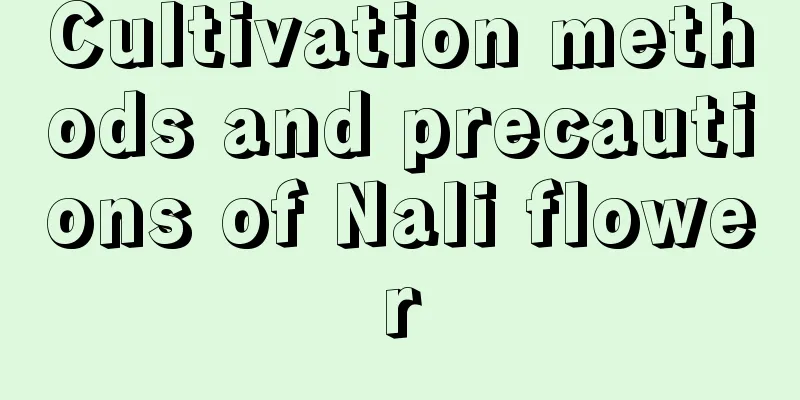Key points of peanut cultivation technology

|
Peanut is an important agricultural crop that is highly favored for its rich nutritional value and wide range of uses. In order to ensure the healthy growth and high yield of peanuts, the correct planting method is crucial. Here are the key points of peanut cultivation technology. 1. Choose good varieties When choosing varieties, factors such as local climate conditions, soil conditions, planting habits and market demand should be considered comprehensively. Choose varieties with strong disease resistance, good adaptability, high yield and excellent quality: such as Luhua series varieties and Yuhua series varieties. 2. Plot selection Peanuts have shallow roots and prefer to grow in loose, fertile, well-drained soil. Therefore, when choosing a plot of land, you should choose sandy land with deep soil, fertile soil and good drainage for planting. At the same time, avoid planting peanuts in saline-alkali land , low-lying land, and areas with serious pests and diseases. 3. Sowing time The sowing time has a great influence on the peanut yield. Generally speaking, spring peanuts are best sown in late April to early May, and summer peanuts are best sown in early to mid-June. Under suitable environmental conditions, the earlier the sowing, the higher the yield. 4. Sowing method There are two methods for sowing peanuts, one of which is row sowing. One method is to spread the seeds evenly in the ditch according to a certain row spacing and plant spacing, and then cover them with soil to press them down; the other method is hole sowing, which is to dig holes according to a certain row spacing and plant spacing, put the seeds in the holes, and then cover them with soil to press them down. When choosing a sowing method, it should be decided based on the characteristics of the plot and the characteristics of the variety. 5. Fertilization management Fertilization is a prerequisite for high peanut yields. Before sowing, apply sufficient base fertilizer, generally 40 to 50 kg of 51% balanced fertilizer per mu. When peanuts enter the early flowering stage, topdressing should be carried out, generally 10 to 15 kg of high-phosphorus and high-potassium compound fertilizer per mu. When applying fertilizer, avoid excessive fertilization and excessive nitrogen fertilizer application, so as to prevent the plants from growing too tall, lodging in the middle and late stages of growth, and serious diseases and insect pests. 6. Prevent and control pests and diseases Peanuts have many diseases and pests, and the focus should be on preventing root rot, white rot, leaf spot, web spot, aphids and white grubs . When preventing and controlling diseases and insect pests, we must adhere to the principle of "prevention first, integrated control" and adopt a combination of physical control, biological control and chemical control. 7. Harvest in time When the leaves of the plant turn yellow, the pods become full and the shells become hard, they can be harvested. When harvesting, avoid damaging the pods and plants to avoid affecting yield and quality. After harvest, the peanuts need to be dried and shelled before being sold and stored. To sum up, the key points of peanut cultivation technology include the selection of good varieties, plot selection, sowing time, sowing methods, etc. Through scientific cultivation and management measures, high-quality and high-yield peanuts can be achieved.
|
>>: Bletilla striata sowing time
Recommend
How to prune roses to make them bloom beautifully
If roses are not pruned for a long time, they wil...
Which places in China are suitable for growing cherries (the places with the most cherry planting in China)
Which places in my country are suitable for growi...
How to water potted camellia and what soil is best
1. How to water The watering of camellia plants i...
How to prepare succulent soil? How to prepare succulent soil
Succulent soil preparation requirements Succulent...
How to trim the Fire Festival succulent to look good
When to prune the Fire Festival succulent Pruning...
How to prune the fortune tree to make it more luxuriant, and when to prune it
1. When to prune the fortune tree The fortune tre...
Watering is a "hard nut to crack"! Insert a few straws in the flower pot, it will be much easier
In fact, every experienced flower-growing expert ...
How to repot the tiger lily
1. Time to change pots Tiger Piranha is usually r...
How to grow jasmine potted plants
Jasmine growth habits Jasmine likes to grow in wa...
Is it harmful to grow garlic indoors?
1. Is it harmful? There is no harm in growing thi...
What to do if the edges of the gardenia leaves turn black and wither
1. Reduce light Reason: Although it likes light, ...
Cultivation methods and precautions of Changchun oilseed vine
Cultivation method of Changchun oilseed rattan Li...
What to do if the leaves of the fortune tree turn black
1. Adjust the temperature Reason: It may be becau...
How to Make Your Own Clivia Soil
1. Formulation requirements Clivia needs fertile ...
What is the best fertilizer for water bamboo?
Fertilizing time for water bamboo Water bamboo ca...









